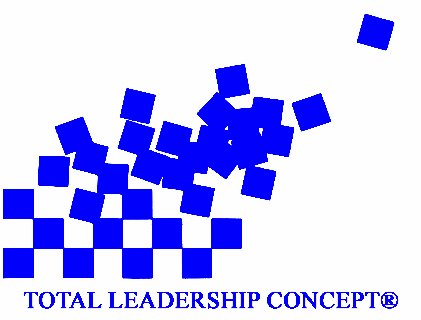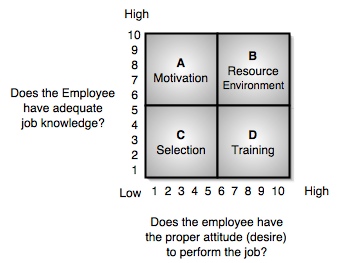
Abilities
Arousal
Attitude
Behavior
Beliefs
Competencies
Engagement
Environment
EI
Experience
Feelings
Intention
Motivation
Nature and genes
Organizational
Performance
Performance Improvement
Performers
Process
Results
Skills
Social Pressure
Talent
Understanding
Values
This level looks at the job and the performers who carry out those jobs in "Three level Framework":
Goals |
Design |
Management |
|
Organization Goals |
Organization Design |
Organization Management |
|
Process Goals |
Process Design |
Process Management |
|
Job/Performer Level |
Job Goals |
Job Design |
Job Management |
If capable, well-trained people are placed in a setting with clear expectations, minimal task interference, reinforcing consequences, and appropriate feedback, then they will be motivated.
Job/Performer Goals
People make processes work, thus their goals need to be directed towards process contributions.
Job/Performer Design
Design looks at such factors as ergonomics, sequence of activities, job procedures, and the allocation of responsibilities.
Job/Performer Management
This level ensure that good leadership is provided.
Performance Analysis Quadrant
To help you to manage the performers, the Performance Analysis Quadrant is a useful tool as it helps with pin-pointing deficiencies. By asking two questions, "Does the employee have adequate job knowledge?" and "Does the employee have the proper attitude (desire) to perform the job?" and then assigning a numerical rating between 1 and 10 for each answer, places the employee in 1 of 4 possible performance quadrants:

A - Motivation:
If the employee has sufficient job knowledge but has an improper attitude,
this may be classed as motivational problem. The consequences (rewards)
of the person's behavior will have to be adjusted. This is not always
bad...the employee just might not realize the consequence of his or
her actions.
B - Resource / Process / Environment: If the employee has both
job knowledge and a favorable attitude, but performance is unsatisfactory,
then the problem may be out of control of the employee. i.e. lack of
resources or time, task needs process improvement, the work station
is not ergonomically designed, etc.
C - Selection: If the employee lacks both job knowledge and
a favorable attitude, that person may be improperly placed in the position.
This may imply a problem with employee selection or promotion, and suggest
that a transfer or discharge be considered.
D - Training: If the employee desires to perform, but lacks
the requisite job knowledge or skills, then additional training or development
may be the answer.